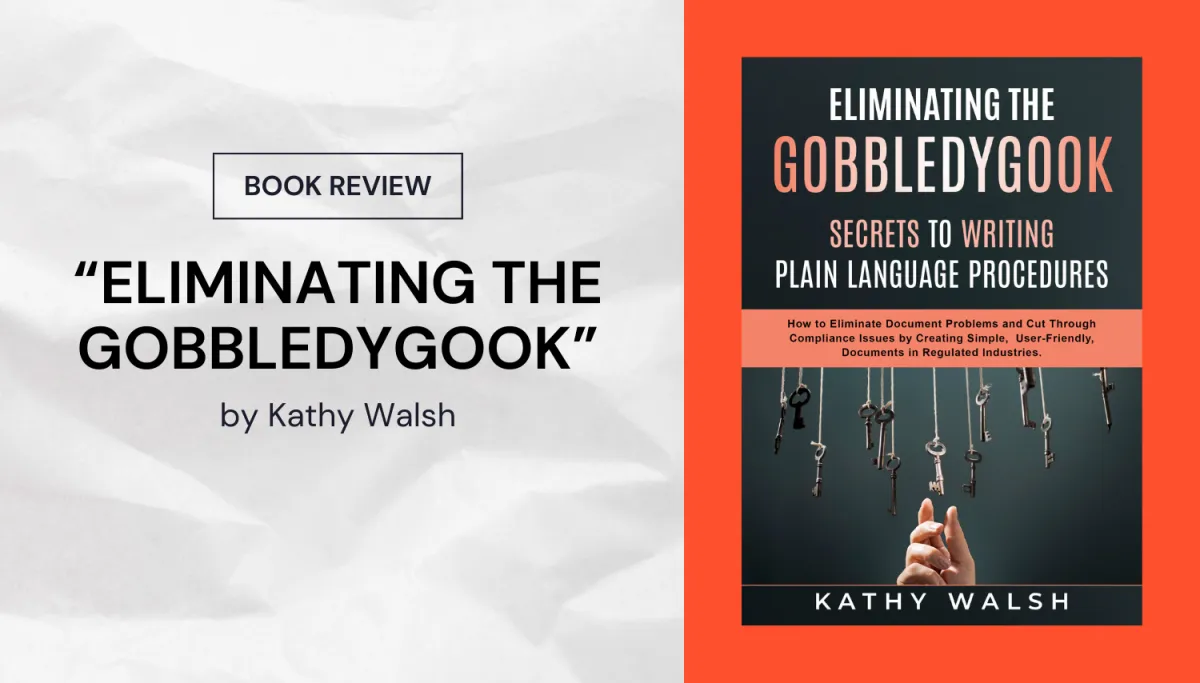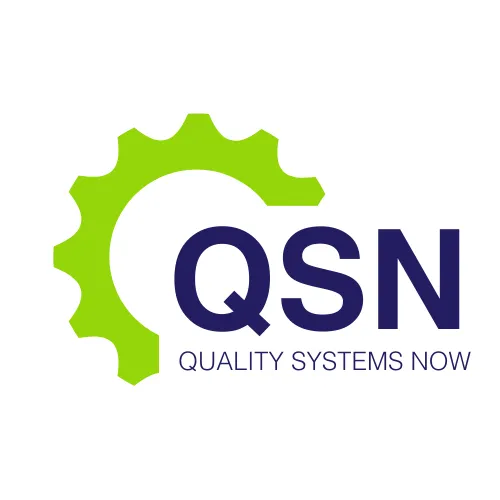LATEST NEWS

Book Review: "Eliminating the Gobbledygook" by Kathy Walsh
Introduction
"Eliminating the Gobbledygook" by Kathy Walsh is explores the world of clear, concise, and effective communication. Kathy is an expert in plain language and communication strategies, and the book provides readers with a practical guide to removing unnecessary jargon and complexity from their writing. This book is particularly relevant in an age where information overload and convoluted messaging often hinder effective communication. Through a blend of theory, practical examples, and actionable advice, Kathy aims to empower readers to communicate more clearly and efficiently, particularly in workplace documentation.
Overview of Content
"Eliminating the Gobbledygook" is structured in a logical and accessible manner, making it suitable for both novice writers and seasoned professionals looking to refine their procedural writing skills. The book is divided into several key sections, each addressing a specific aspect of plain language and effective communication.
Understanding Gobbledygook:
What is "gobbledygook" - Kathy explains its detrimental effects on communication. She provides historical context and contemporary examples to illustrate how jargon, poor document structure and overly complex language can obscure meaning and frustrate readers.
This section sets the stage for the rest of the book by highlighting the importance of clarity and simplicity in writing.
The Principles of Plain Language:
In this section, Kathy introduces the core principles of plain language, including clarity, brevity, and accessibility. She emphasizes the importance of understanding the audience and tailoring the message to their needs.
She provides guidelines on sentence structure, word choice, and document design, offering practical tips for applying these principles to various types of writing within a company Quality Management System (QMS).
Techniques for Eliminating Gobbledygook:
This is the heart of the book, where Kathy presents a range of techniques for simplifying language and enhancing clarity. She covers topics such as active vs. passive voice, avoiding technical jargon, and using visuals to support text.
Each technique is illustrated with before-and-after examples, showing how complex, wordy passages can be transformed into clear, straightforward messages.
Application in Different Contexts:
Kathy extends her discussion to specific contexts, such as business communication, technical writing, and public information. She provides tailored advice for each context, recognizing that different audiences and purposes may require different approaches and therefore, different styles of writing.
This section is particularly useful for professionals who need to apply plain language principles in their specific fields.
Overcoming Barriers to Plain Language:
Recognizing that implementing plain language can be challenging, Kathy addresses common barriers and resistance to change. She offers strategies for persuading colleagues and stakeholders of the benefits of clear communication.
She also discusses the role of training and organizational culture in promoting plain language practices.
Strengths of the Book
One of the key strengths of "Eliminating the Gobbledygook" is its practicality. Kathy’s writing is clear and engaging, reflecting the principles she advocates. The book is filled with actionable advice that readers can apply immediately to improve their writing. The use of real-world examples and case studies makes the content relatable and underscores the tangible benefits of plain language.
Another strength is the comprehensive nature of the book. Kathy covers a broad range of topics, from basic principles to specific applications and strategies for overcoming resistance to adopting plain language with management or team members. This makes the book a valuable resource for a wide audience, including writers, editors, business professionals, educators, and anyone interested in improving their communication skills.
Kathy’s expertise and experience in the field are evident throughout the book. Her insights are grounded in a deep understanding of communication theory and practice, and she draws on a wealth of research and real-world examples in regulated industries to support her arguments. This lends credibility to her advice and makes the book an authoritative guide on the subject.
Conclusion
"Eliminating the Gobbledygook" by Kathy Walsh is a must-read for anyone looking to improve their writing skills in regulated industries. Through clear explanations, practical advice, and a wealth of examples, she effectively demonstrates the importance of plain language and provides readers with the tools they need to write more clearly and effectively at work. Whether you are a professional tech writer, a business executive, an educator, or simply someone who wants to communicate more effectively in your writing, this book will help you cut through the clutter and get your message across clearly and effectively.
